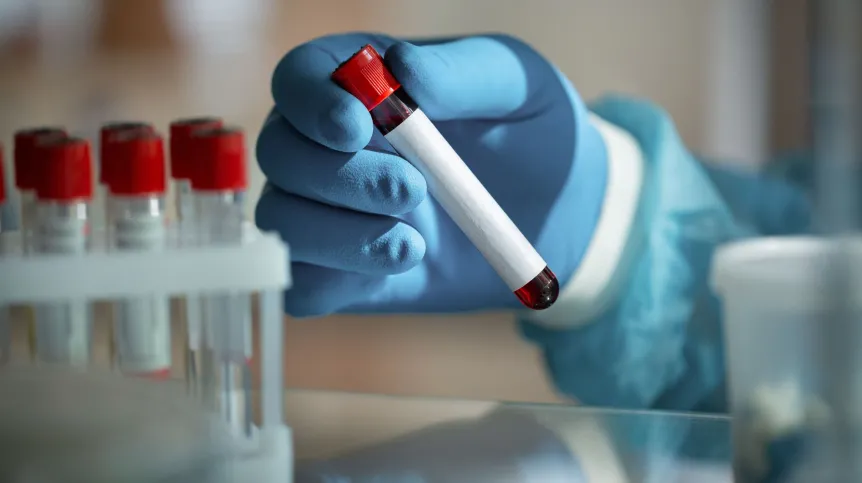
Kininogen present in the blood can cause thrombosis and other cardiovascular diseases, it also plays a role in COVID-19 complications. Dr. Michał Ponczek from the Faculty of Biology and Environmental Protection of the University of Lodz presents the latest research on the structure of this protein.
A paper, in which the biologist describes the state of research on kininogen, was recently published in the International Journal of Molecular Sciences.
The researcher explains that kininogens are found in the blood of most vertebrates. They are known to be important in thrombosis and blood pressure regulation. However, to know the exact mechanism of its action, a description of its structure is needed, and this has not been done yet. A new research method can help achieve it.
Dr. Ponczek said: “So far, the attempts to crystallise kininogen have failed and little is known about the shape of a kininogen at the atomic level. New advances in cryioelectron microscopy (cryoEM) enabled scientists to crack the structure of proteins resistant to traditional crystallographic methods. High molecular weight kininogen is a good candidate for structural investigation by cryoEM. At the same time, we are already aware that its role in the development of cardiovascular diseases should not be underestimated.”
Kininogen also plays a role in complications of COVID-19. Researchers already know that the SARS-CoV-2 coronavirus causes increased release of a substance called bradikinin, the source of which is kininogen. Such release promotes the development of pneumonia, causing cough and fever, and in subsequent phases also problems with blood coagulation.
Ponczek said: “Thrombotic complications related to COVID-19 infection indicate the need for research into the blood clotting system.”
Understanding the structure of kininogen is important for a better understanding of changes and processes that it is subject to in sickness situations such as thrombotic disorders that accompany various civilization and infectious diseases, with activation of the immune system, inflammation. (PAP)
Author: Agnieszka Grzelak-Michałowska
agm/ ekr/ kap/
tr. RL













